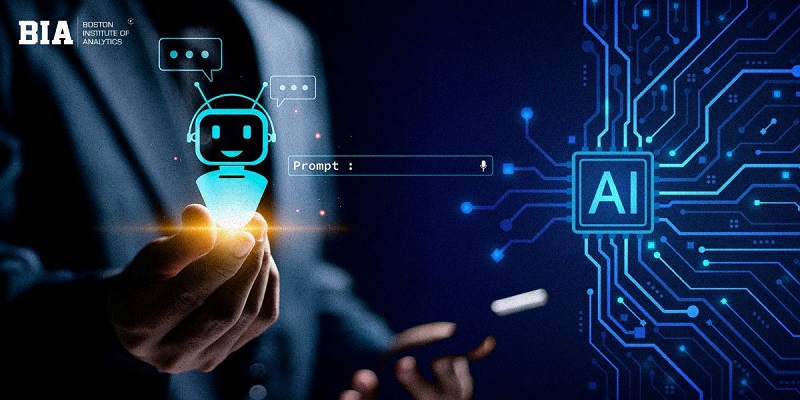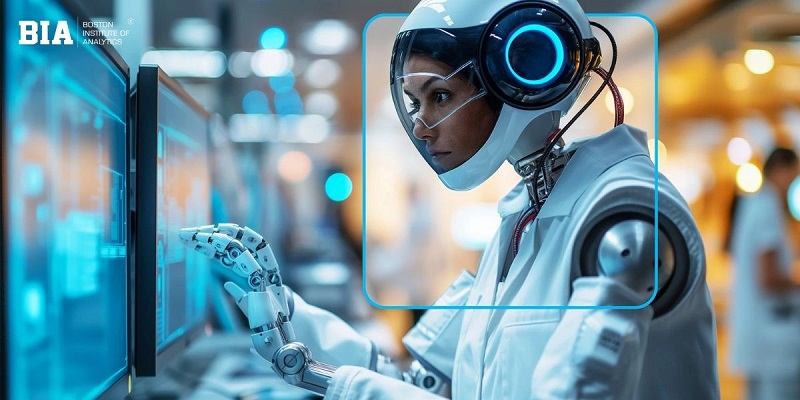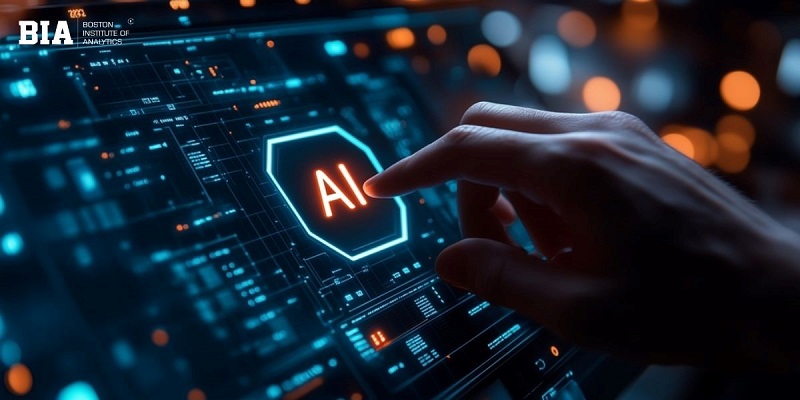The urban landscape is changing rapidly, transforming into intelligent ecosystems, where technology and infrastructure work in complimenting ways to improve the lives of citizens. As cities are being transformed in these ways, Artificial Intelligence will be at the centre and heart of most of these changes. Not only is Artificial Intelligence improving the way cities operate, interrelate, and develop, it is changing our future. For anybody interested in understanding and contributing to this future, an Artificial Intelligence Course will become a necessity.
Smart cities use huge quantities of data collected from multiple sources of sensors, devices, and systems to generate useful insights. The AI is the brain for the data collected to make smart decisions, recognize patterns, and make decisions that can improve decision making about any number of urban life activities from traffic movement to policing. In this respect, AI is not only built for urban life; it is the endorsing of an efficient, sustainable, and citizen centred urban life.
AI in Urban Planning and Development
Urban planning and development often depend upon historical relationships and predictive criteria that will not, with rapid urbanization, have an accurate basis for prediction. AI offers an adaptive and dynamic process to be incorporated into the urban planning process.
Machine learning algorithms can track and analyze demographic trends, resource consumption, and infrastructure use that will allow city planners to understand where opportunities for development are located, predict future growths and development, and even run models to simulate impacts from new development. When planners can utilize new data practices to better inform their decisions related to urbanization, planners can better mitigate urban sprawl, ensure equitable access to resources, and maximize the viability of urban community renewal and health.
As an example, AI can be used to analyze a city or municipality’s pedestrian and vehicular traffic patterns to assess how roadways and public spaces could be redesigned for maximum utility. Additionally, AI can provide planners with the best location for public services including the implementation of schools, hospitals, or public spaces such as parks.
Providing residents with equal access to resources is a fundamental concern for many, especially for under-represented communities. AI-enhanced response systems will help urban planners recognize problematic areas sooner and design sustainable and resilient urban developments.
Revolutionizing Transportation and Mobility
Transportation is perhaps the most visible use of AI in smart cities. Urban dwellers are constantly frustrated to encounter congestion, pollution, and poor public transportation. AI provide a range of potential solutions to these issues.
Intelligent Traffic Management Systems: AI systems can use live traffic data using traffic cameras, sensors, and GPS to monitor traffic and alter the timing of traffic lights, rerouting vehicles, and monitor congestion. This could lessen the mileage of everyday trips, minimize fuel consumption, and lower emissions. Can you imagine it? A city that flows like water, altering the flow depending on rush hour levels of traffic, accidents, and organized events.
Autonomous Vehicles: The use of autonomous vehicles while still in its infancy will have large impacts on urban mobility. AI enables the vehicle to perceive its surroundings, create mental maps, understand routing, and implement decision making processes. In a smart city context eventually autonomous vehicles and public transportation will interact directly with infrastructure within the city improving routing, reducing demand for parking, and potentially improving safety.
Optimized Public Transportation: AI calculates the demand of riders, identifies trends in the various weather conditions, and recognizes noteworthy events to adjust bus and train schedules, ultimately making public transport not only more sustainable and timely, but also more responsive to its users. This could cause additional reliance on public transport and continue to reduce potential car use among the population and its environmental impacts.
Enhancing Public Safety and Security

Smart cities are safer cities due to innovative, AI-driven security solutions. AI has the ability to analyze tons of surveillance video and find out any unusual activity, examining threats and notifying authorities in real-time. This essentially creates a method to allow fewer incidents to escalate longer than they should give the possibility of both proactive notifications and responding more quickly.
Predictive Policing: Furthermore, AI algorithms can analyze prior crime and social media trends or deliverables to statistically identify when and where an area could have crimes based on good data rather than just geographic anecdotal evidence, allowing law enforcement the opportunity to load their offerings and respond before the incident arises. Undoubtedly ethical behaviour ensured by that city and state is vital, in the sense of having both rules as well as compliance when considering technological or data-fuelled solutions to inequity.
Emergency Response Optimization: In situations associated with emergency management, such as natural disasters or mass emergencies, AI can bring the situation to where it optimizes emergency services. With the data about the incident and in terms of conditions related to ongoing situations as well as resources available, AI can bring first responders to an incident of need expeditiously, ultimately saving lives or mitigating damages from bad decision-making.
Sustainable Resource Management
Environmental sustainability is a cornerstone of the smart city concept, and AI plays a crucial role in achieving it.
Smart Grids: AI can help maximize energy efficiency and decrease wasted energy by forecasting energy demand, finding inefficiencies, and easily integrating renewable sources Energy efficiency reductions are evident in lower carbon footprints, reduced waste, and more reliable energy supply to customers. Home owners and businesses can also be use AI driven energy management systems that optimize the use of energy based on availability and real-time pricing.
Waste Management: AI can improve the efficiency of waste collection by finding optimum truck routes for garbage collection, based on the fullness of garbage bins, traffic condition, and historical usage behaviour. This will contribute to emissions reduction, lower fuel consumption, and lower operating costs for waste management services. Secondly, AI can be used in waste sorting facilities to identify and pick out recyclable materials for transmission downstream, all of which will improve the recycling rate in the community.
Water Management: AI can utilize sensors, analytics, and utilities to detect leaks in water pipes, monitor water of desired quality, and predict expected usage volumes. This allows huge water savings to be realized, single waste, and provide residents with access to cleaner and safer water.
Personalized Citizen Services

AI is more than an infrastructure investment; it is about improving the quality of daily activity for citizens. Smart cities can harness AI to provide personalized service and increase citizen engagement.
Chatbots and Virtual Assistants: An AI-powered chatbot could give residents immediate answers to questions about local public services, the city’s bylaws or regulations, and even local events. It can improve communication with the city administration, as well as improve the accessibility of information.
Personalized Recommendations: AI could produce recommendations for public transportation routes, local events, or even health services, based on the preferences or requirements of the users. This creates a more personalized and responsive urban experience.
Enhanced Accessibility: AI can assist in designing the urban environment to be more accessible for people with disabilities. The possibilities for intelligent navigation for visually impaired people, or smart infrastructure by which local systems adapt to users’ mobility requirements, shows how AI can enable inclusivity.
The Role of Data and the Need for Expertise
The dependability of AI in smart cities ultimately depends on the possession and application of large amounts of data. It only has purpose if it can be applied, processed, analyzed, and interpreted by people who are skilled professionals. Therefore, the desire for skilled individuals in Artificial Intelligence practices is a critical component in the development of smart cities.
The Boston Institute of Analytics and similar organizations are leading edge in the training of future data scientists and artificial intelligence experts to develop and implement smart city solutions. An Artificial Intelligence Course, equips learners with the skills in machine learning, deep learning, natural language processing and data analytics are key to constructing and managing intelligent urban systems. A course covers everything ‘from sensors to predictive models’, to help the learner gain required knowledge to contribute effectively.
Challenges and Ethical Considerations
Though there is enormous promise for AI in smart cities, there are substantial obstacles and ethical considerations to face.
Data Privacy and Security: The collection of vast amounts of personalized user data creates challenges for privacy and security. It is critical to put safeguards in place within laws and ethical guidelines to protect citizen data from improper usage and cyber-victimized threats.
Algorithmic Bias: AI algorithms may reinforce existing biases in society, and in some cases, may even magnify them. For example, if an AI algorithm design or training processes contains biases, it may lead to genuinely discriminative outcomes as it is used in daily practices that extend from law enforcement to resource allocation. As such, fairness and transparency are paramount.
Job Displacement: AI performs and automates more and more activities, and the concern is potential job loss by displacement of the worker. Smart cities need to develop and support retraining and upskilling programs to support current workers and their transitions to changing economic conditions.
Technological Divide: There is a risk that the good offered by smart city technologies will not be equitably distributed to all parts of society, potentially growing existing disparities. It is important that smart cities address equitable access and contribute to digital inclusion.
Final Thoughts
Artificial Intelligence is more than just a technological wave; it marks a revolution in the way we design and build our cities. AI-integrated smart cities will allow for a more efficient, sustainable, safer and ultimately more liveable future for all. The move toward fully intelligent cities are a work in progress that will continue to be innovated and developed, and needs interdisciplinary collaboration, as well as some essential understanding of the possibilities and limitations of AI.
If you are a future professional looking to achieve a leading role in the next phase of the urban profession, taking an Artificial Intelligence Course will give you the essential knowledge and hands-on training to help you design the smart cities of the future. The urban design and technology conundrum is now being prepared by professionals like Boston Institute of Analytics. Let’s keep building an incredible urban future.
